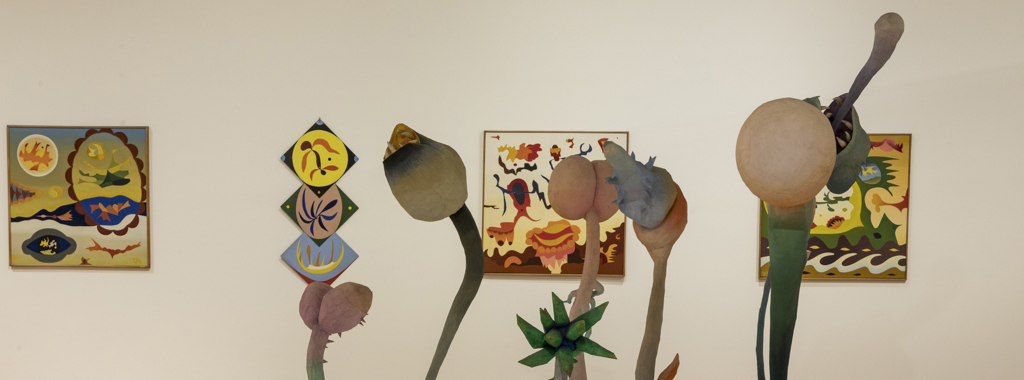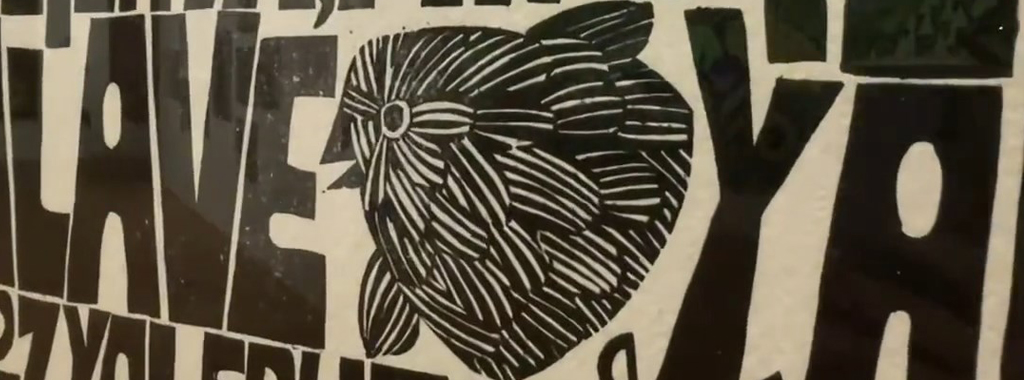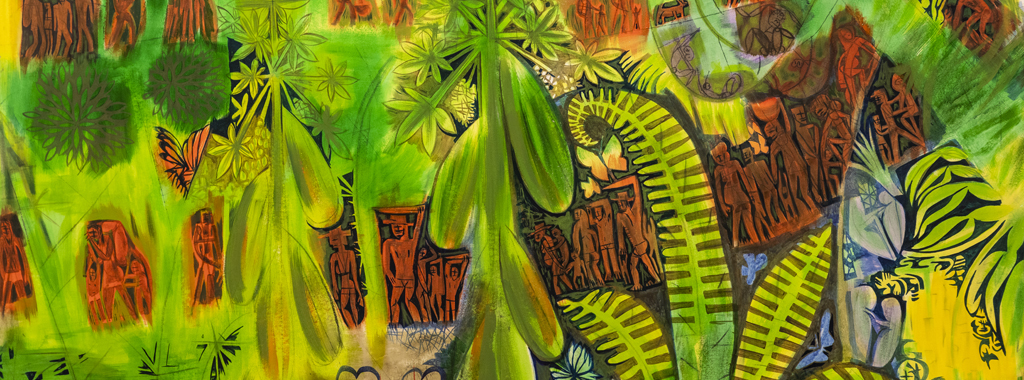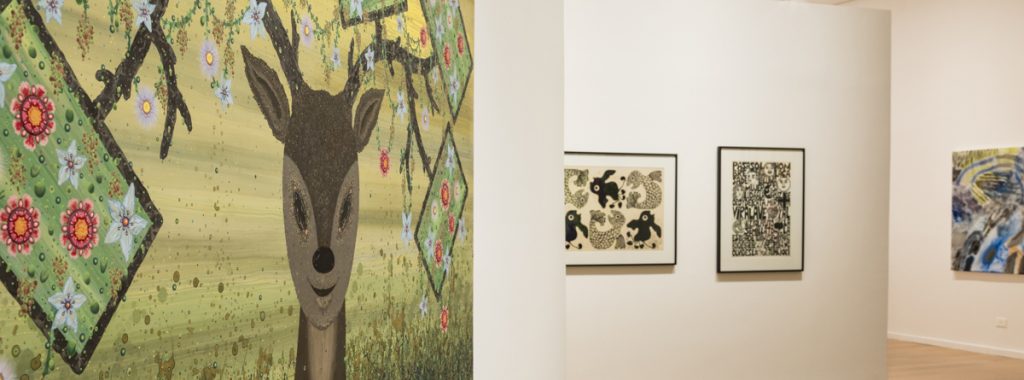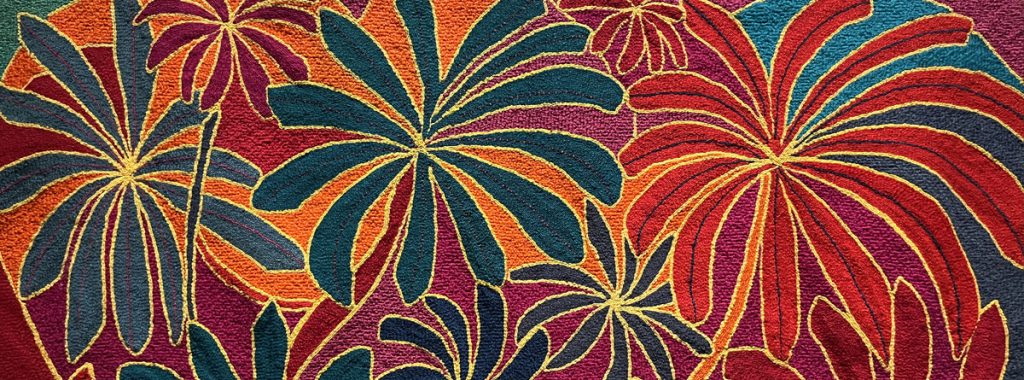Produced between the 1940s and the present, the works in Manifiesto verde [Green Manifesto] are a celebration of art as a vital tool in revealing the vigour of the Earth, accessed by the artists through close observation of their surroundings, and pictorial and imaginary exercises. These are works in which reality and fantasy converge, exuberant visions where humans, flora, fauna, air, earth and water cohabit and participate in processes of transformation and exchange. Here, geographies become anatomies, and nature recovers the form of a great wild organism, at once dream and nightmare, devouring and embracing. The outsized proportions of the works, their undulating and intertwining forms, the vibrancy of their colours and the abundance of their compositions speak of the infinite non-hierarchical webs that make up all living things and remind us that nature is not simply an object of domination.
Manifiesto verde takes its title from the 1971 statement by Nicolás García Uriburu (Argentina, 1937-2016) condemning the antagonism between civilisation and nature. This exhibition asks us to step back from the dichotomies that have distanced us from the rest of the living world. Focused on restoring his painting’s fundamental role as a manifesto against the depredation and exploitation of the planet, it is a tribute not only to Uriburu’s performative practice but to his pioneering activism. With this in mind, we began a conversation with Florencia Böhtlingk to bring together works by artists who, for decades, have been creating images of fecundity that invite us to pay attention and recover a sense of awe for the painting and, through it, for the throbbing, feeling, living world it represents.
These artists’ works have contributed to their artistic movements highly personal languages born of our South and prompted by experiences of the Paraná Delta, the Wetlands, the Littoral, the jungles of Misiones and the Amazon, and the landscapes of the Andes. These and other ecosystems are reincarnated and set free in these paintings, drawings, engravings and sculptures, where they find a place to breathe and to display their richness and their innermost core.
Artists: Nicolás García Uriburu in dialogue with Luis Fernando Benedit, Florencia Böhtlingk, Melé Bruniard, Juana Butler, Feliciano Centurión, Nora Correas, Casimiro Domingo, Raquel Forner, Ricardo Garabito, Edgardo Giménez, Juan Grela, Aid Herrera, Lido Iacopetti, Marcelo Pombo, Juan Tessi
Guest Artist: Florencia Böhtlingk
Curated by: Alejandra Aguado
Curatorial Assistance: Rodrigo Barcos
Exhibition Design: Daniela Thomas and Felipe Tassara in collaboration with Iván Rösler
Production: Edgar Lacombe
With my art, I denounce the antagonism between Nature and Civilisation.
That is why I colour my body, my sex and the waters of the world.
The most developed countries are in the process of destroying the water, land and air, the reserves of the future in Latin American countries.
Excerpt from “Manifiesto verde” [“Green Manifesto”] (1971), by Nicolás García Uriburu.



